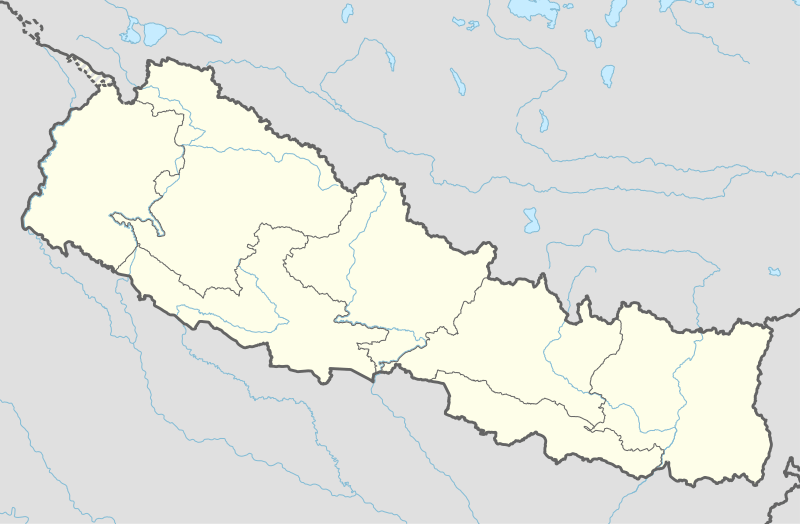Itari Parsahi
Itari Parsahi is a village development committee in the Siraha District in the Sagarmatha Zone of south-eastern Nepal.
Itari Parsahi इटरी पर्साही | |
|---|---|
 Itari Parsahi Location in Nepal | |
| Coordinates: 26.74°N 86.19°E | |
| Country | |
| Zone | Sagarmatha Zone |
| District | Siraha District |
| Population (1991) | |
| • Total | 3,302 |
| Time zone | UTC+5:45 (Nepal Time) |
Demographics
At the time of the 1991 Nepal census, it had a population of 3302 living in 664 households.
Many mandal's (dhanuka) people live there along with Maithil Bharmin, Mahapatra Bharmin, Muslim, or Mushar people.
Culture
A temple of Lord Shiva called Parasnath Mahadev was excavate . While digging, villagers found a half constructed building, with four five foot tall. pillars, a stone ladder and a philosopher's stone 'paras pathar' (पारस/पारसमणि). Villagers completed the building. After some years, King Birendra bir bikram shah visited the temple. Months after the king's visit, the paras pathar was stolen.
Economy
The villagers are poor, and farming is their main occupation. Most houses are made of mud and straw. One school offers primary education.
Geography
The Ghurmi and Kamala rivers form two boundaries.[1]
References
- "Nepal Census 2001". Nepal's Village Development Committees. Digital Himalaya. Archived from the original on 12 October 2008. Retrieved 17 November 2008.